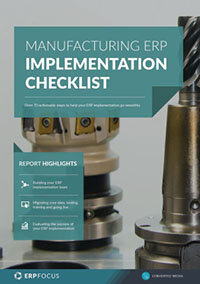Customizing your ERP implementation
Whether or not to customize your ERP implementation – and how - is a topic that is both controversial and packed with implications. It is not likely you can totally avoid all customization, but if you aim for zero customizations, at least you will minimize it.
Pros and cons of ERP implementation customizing
The downside of customization, of course, is that as patches, service packs, and version upgrades are applied, the customized code written locally might no longer work, and the system could crash. The upside of customization is that when ERP provides a poor out-of-the-box solution, customization can provide a work-around so that the other 99% of solid ERP benefits can be captured.
you have a responsibility to keep your ERP system as standard as possible
Best practices
Once the customization door is opened, how it is accomplished is the next most important control. If care is taken to extract standardized ERP data, manipulate it outside the system with a customization routine, and reinsert the modified but standard ERP data back into the system, customizations can be managed with a minimum of risk. On the opposite end of the spectrum, if you allow a problem to be resolved by going in and tinkering with the ERP source code, you are creating a time bomb which has a one hundred per cent certainty of blowing up in the future.
Recommended Reading: ERP Implementation Guide - The complete companion for ERP implementation
Keep ERP customization under tight control
Your ERP implementation project plan should contain explicit controls on customization, developed with the IT members of your ERP project team. The controls should set firm boundaries on what type of customization can be done, on who is allowed to request customization, who is allowed to approve customization, and who is allowed to write customization. These controls are not an exercise in micro-management; they are an acknowledgement that you have a responsibility to keep your ERP system as standard as possible. Many of the promised financial benefits from ERP cascade from standardized software, and unrestrained customization transforms those benefits into liabilities.
As an ERP project manager, executive sponsor, or IT director, this arena requires you to use consistent and intelligent judgment. The paradox you have to wrestle with is that every individual customization will have a compelling benefit, but if you allow unlimited customizations, all of those benefits sum to a disaster, as you will be stuck with an ERP system that cannot be upgraded. On the other hand, you will find some out-of-the-box ERP solutions which are so poor compared to what they should be that insisting on using them “as-is” will cost you dearly in confidence and credibility.
Train yourself to ask unequivocal questions of your IT developers. Because all customizations deliver a benefit to someone, they have the effect of making problems quietly disappear. In the turmoil of an ERP project, it is sometimes difficult to summon the energy to investigate things that are no longer problems, but if you adopt an “ignorance is bliss” path of least resistance, you will end up with an ERP system that cannot be modified except by further customization.
Free white paper

Manufacturing ERP Implementation Checklist
Over 70 actionable steps to rolling out new manufacturing ERP software

Free white paper

ERP Implementation: 9 steps to success
The 9 proven steps you should follow when implementing ERP



